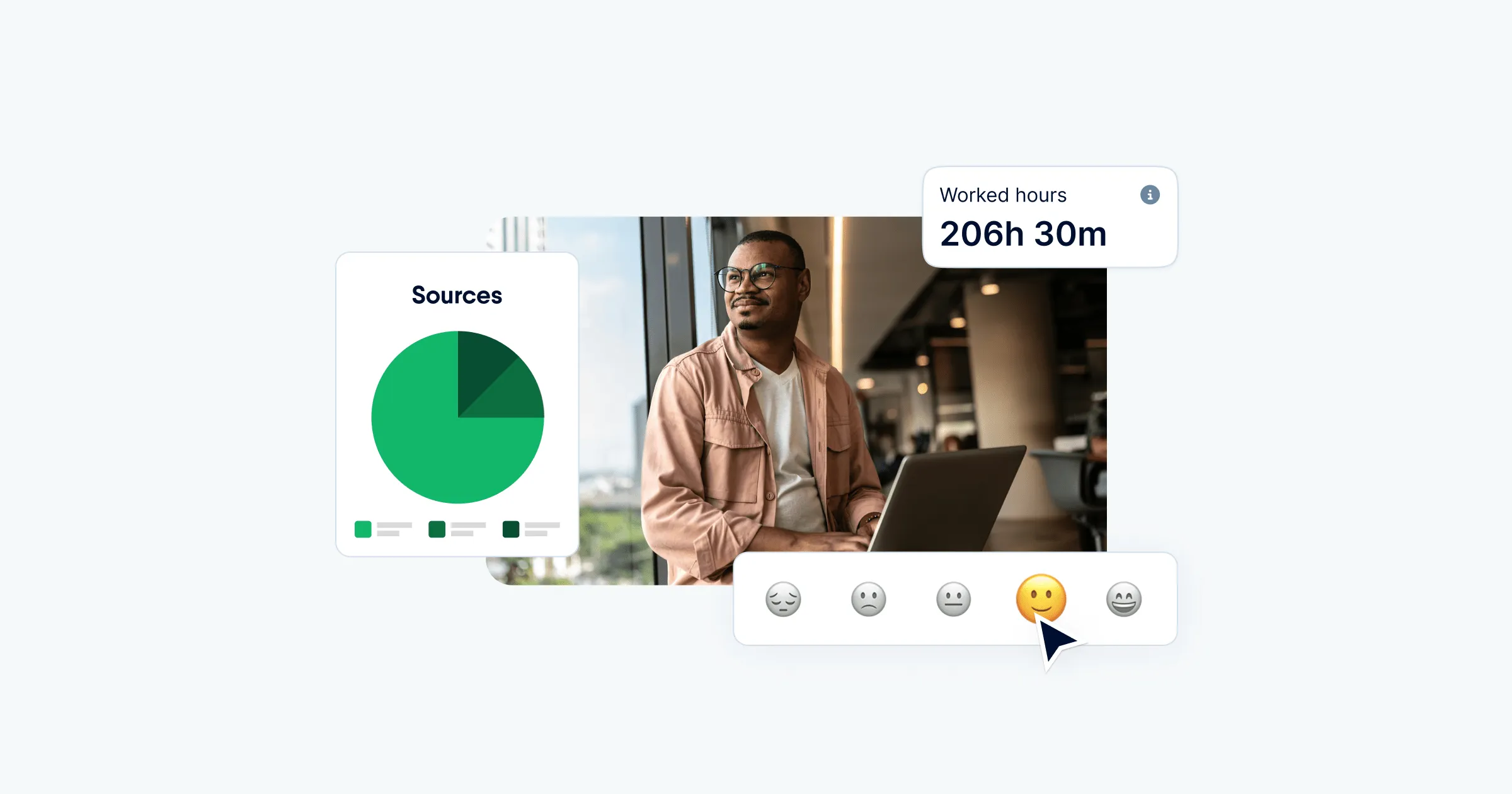
How to create a perfect retention strategy with the HR platform
Employee retention has become a major headache for businesses. Many companies, even the most successful, can be dealing with unhappy employees behind the scenes.
They’re not keeping their dissatisfaction to themselves, either. Workers are turning to social media platforms to voice their frustrations. They use terms like “quiet quitting” and “act your wage” to express feeling undervalued.
Research from Gallup’s 2023 State of the Global Workplace report reveals this reality. Almost 6 out of 10 employees quit quietly, showing disengagement from their jobs.
Now, companies realize that keeping employees happy is essential for long-term success. It’s not just about perks; it’s about making employees feel valued and respected for their work.
In this article, we’ll explore the challenges of employee retention and why it’s so important. We’ll also examine how HR platforms can boost engagement and satisfaction with strong employee retention strategies.
Engaged employees are the cornerstone of a thriving workplace. Nearly 6 out of 10 quietly leave, signaling a deeper disconnection. Recognizing their value goes beyond perks—it's about respect and appreciation for their contributions.
*based on Gallup’s 2023 State of the Global Workplace report
The importance of employee retention strategies in HR
Employee retention strategies are crucial for maintaining stability, productivity, and growth within companies. Let’s dive into some of the benefits of implementing a retention strategy:
Improved customer service
Keeping skilled employees improves customer service. By preventing knowledge gaps caused by high turnover, operations run smoothly. Plus, happier customers mean fewer complaints — especially when the customer service function is structured to support consistency and responsiveness.
Saves time
Retention strategies save time when recruiting and training new staff. This leaves more time for HR to focus on employee satisfaction and improve the culture. With less need for supervision and retraining, managers also have time for other tasks.
Fewer costs
Hiring a new employee is expensive. It disrupts workflow and costs a lot of money to find and hire them. Instead, these resources could be used to provide benefits or promote the company’s top employees to higher positions.
Increased employee engagement
Companies can also boost employee job satisfaction and engagement with effective employee retention strategies, especially given Gallup’s report showing an employee engagement of only 13% in Europe.
When valued and supported, employees are more committed and motivated in their roles. Employee retention fosters a productive workplace that drives growth.
Invest in employee retention to fuel workplace success. With only 13% engagement in Europe, strategic retention strategies are essential for fostering commitment and driving growth.
*based on Gallup’s 2023 State of the Global Workplace report
Positive culture
High turnover can create a negative work environment. Employees might be less effective working in teams when they’re waiting for the next person to leave, which can lead to frustration and affect employee morale.
A lot of companies only focus on employee retention when turnover rates are high. Yet, many successful companies prioritize to retain employees, even with low turnover rates.
Employee retention strategies encourage employees to stay with the company. They also enhance work life balance and increase engagement levels, leading to higher revenue.
Identifying employee retention challenges
There are many reasons for high employee turnover in a company. Yet, these are some of the most common retention issues faced by companies:
1. Overwork
In a 2022 survey by McKinsey Health of 15,000 workers across 15 countries, 25% said they felt burned out. Working long hours without breaks hurts employees' professional development, morale, and well-being.
Working too much increases employee turnover and lowers job satisfaction and engagement.
2. Lack of recognition
Employees thrive in a company culture where their contributions are acknowledged and appreciated. However, the absence of recognition can leave them feeling undervalued and disengaged.
Employees who aren’t praised for their work feel less motivated and dedicated. This can hinder job satisfaction and lead to finding appreciation somewhere else.
3. Poor compensation
In a recent study, 74% of HR professionals identified insufficient pay, bonuses, profit sharing, and employee benefits as the main reasons employees leave their organizations.
When employees feel they’re not paid fairly, they might look for better-paying jobs. Thus, ensuring competitive compensation packages is crucial for retaining top talent.
4. Negative company culture
A toxic company culture thrives on distrust, disrespect, and bad communication. This pushes employees away and makes it hard for the company to succeed. Nobody wants to come to work feeling they can’t speak up, or their work isn’t appreciated.
Toxicity makes stress levels rise and fosters high employee turnover. To fix these cultural problems, leaders need to commit to talking openly and creating a supportive work environment.
5. Bad hiring processes
According to Gallup, only 12% of employees feel their company does a great job of bringing new hires on board. Poor onboarding can prevent employees from leaving early, as they find it hard to fit in or understand the company.
A smooth hiring process with proper onboarding boosts employee retention and helps them succeed in the long run.
Companies need to identify and address these challenges proactively. This is the only way that they can implement a retention strategy that creates a better work environment.
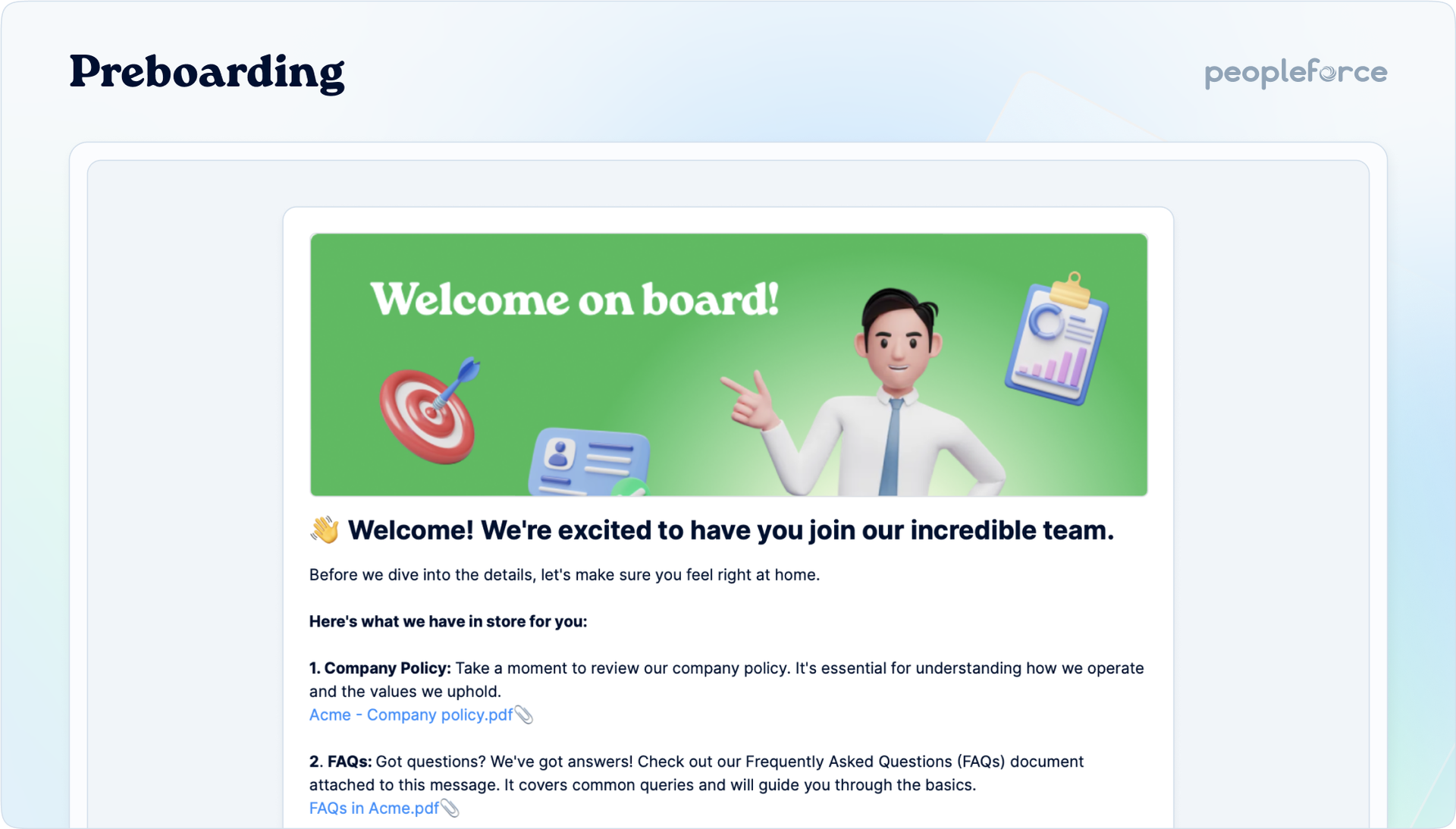
Leveraging HR platform for retention
HR platforms are great tools to address retention challenges and retain top talent. In fact, 58% of businesses use HR technology not just to recruit but also to keep skilled employees. HR platforms can help to retain employees and create employee retention strategies in four ways:
1. Simplifying Pre-boarding and Onboarding
Smooth pre-boarding and onboarding processes are crucial for employee retention. These stages mark the initial interactions between a new hire and the company. HR platforms like PeopleForce make these simpler, engaging employees from day one.
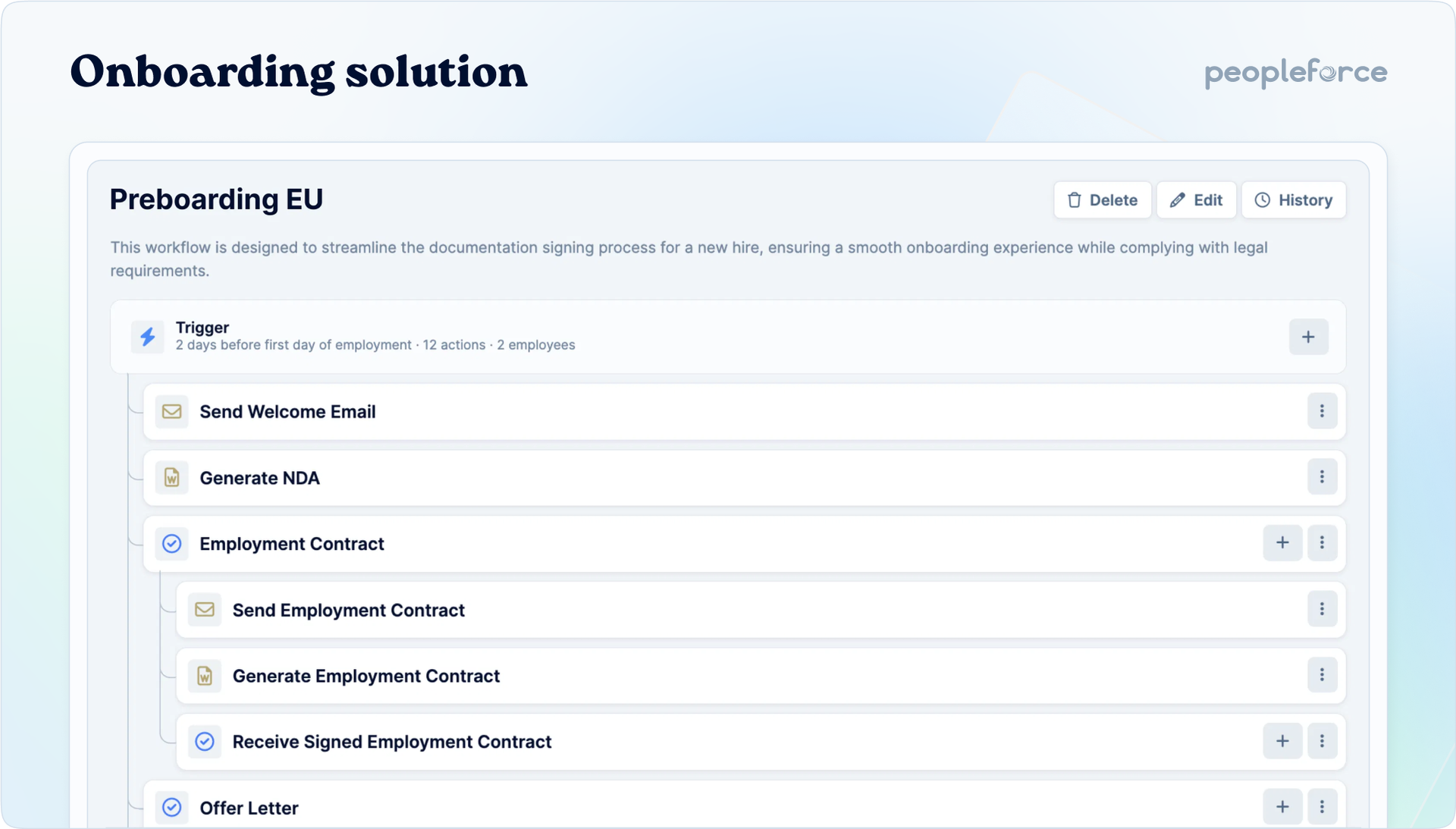
Our pre-boarding and onboarding solution allows new employees to transition smoothly. Companies can collect and organize data efficiently through automated workflows and adjustable forms.
Pre-boarding allows the company to welcome new hires even before they officially begin. This helps HR teams collect important information and personalize the welcome. The software also lets companies customize onboarding for each department so every new hire gets the right support.
Tap into the potential of HR platforms to address retention hurdles and retain top talent. With 58% of businesses leveraging HR technology for talent retention, these platforms play a crucial role in shaping impactful strategies.
*based on Gallup’s 2023 State of the Global Workplace report
2. Improving Employee Engagement
Keeping workers engaged and satisfied in their roles is key to employee satisfaction. Using Pulse, our employee engagement survey solution, can help with this.
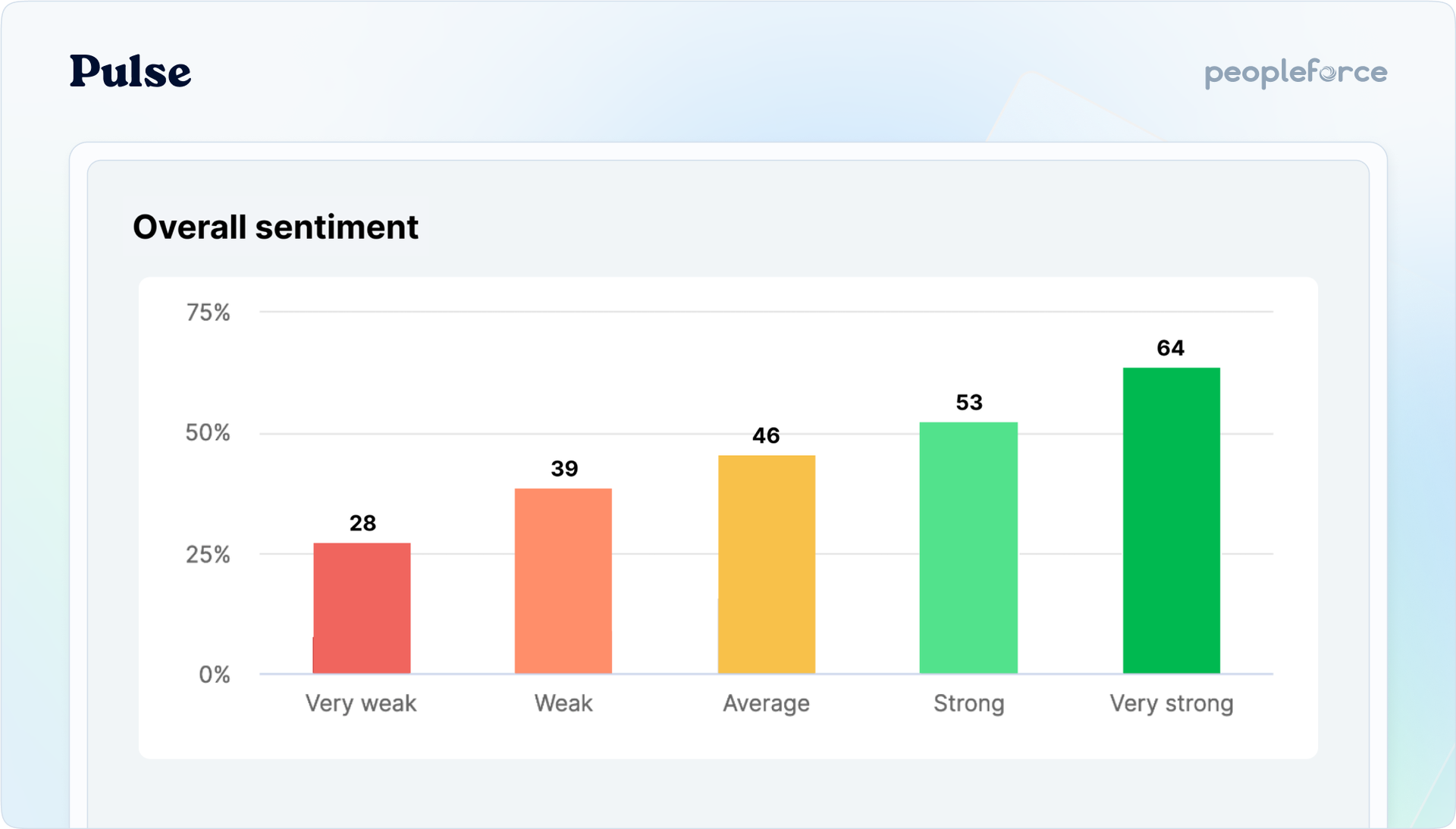
Pulse lets companies gather important feedback from employees through online surveys. These help measure how engaged, satisfied, and motivated employees are. By analyzing survey results, companies can improve and boost employee engagement.
With tools like eNPS, Pulse helps increase loyalty among staff by giving feedback on how satisfied employees are over time. This allows companies to create a better work environment by fixing what employees say needs improvement.
Also, Pulse allows managers to create customized survey questions. These help them see what factors affect employee engagement and focus on improving those areas. Our easy-to-use interface makes conducting surveys and gathering responses easier for companies.
3. Implementing Performance Management
Efficient performance management is crucial for retaining employees and driving productivity. Our performance management solution, Perform, helps set goals and track progress.
With automatically tracked KPIs, managers can see how the team is performing and ensure everyone is working towards the same goals. Perform makes it easy to set and track goals using OKRs, whether for individuals, departments, or the whole company.
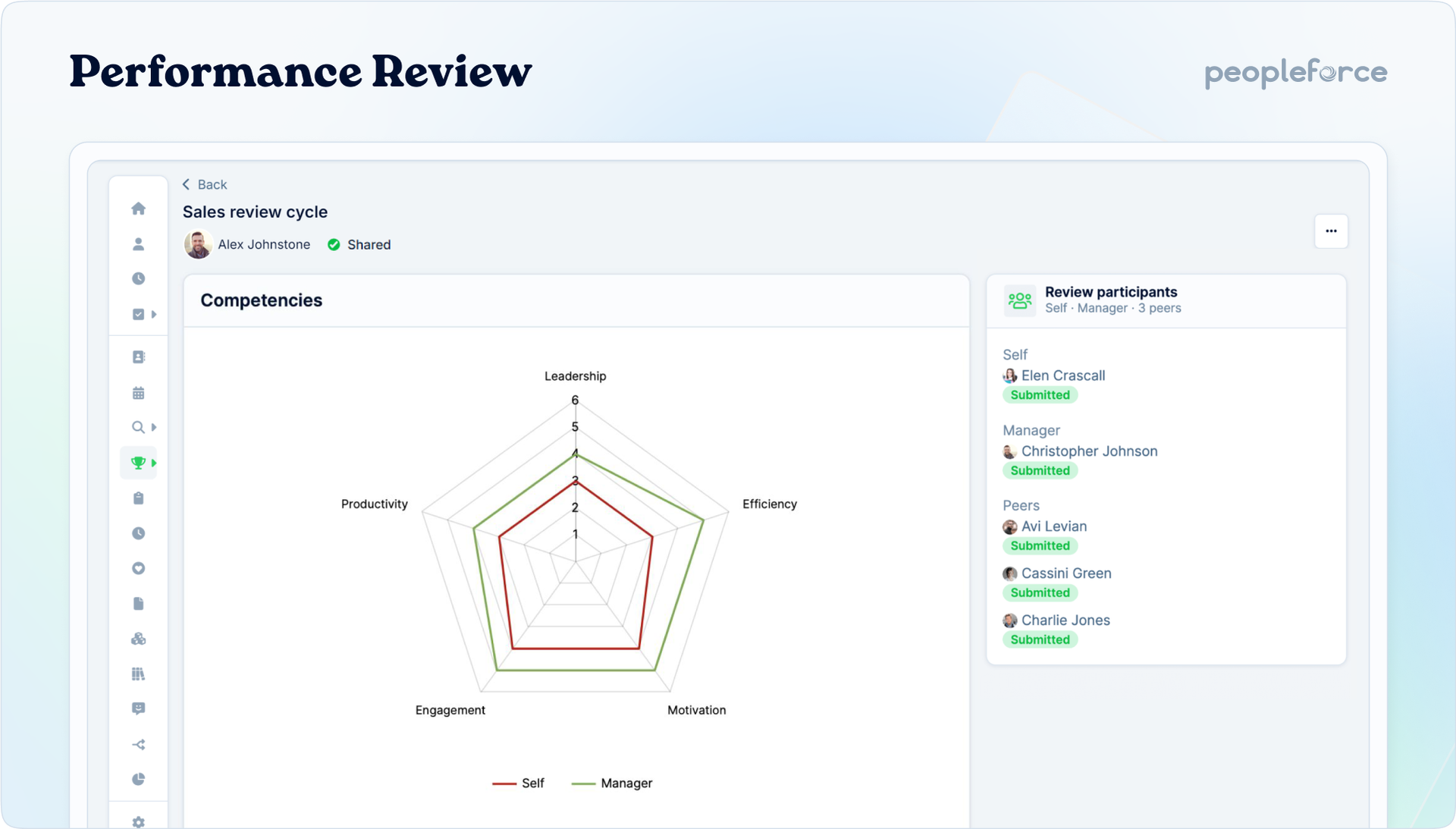
Also, our software helps with feedback through 360-degree reviews, improving communications. It automates surveys to get feedback regularly and makes one-on-one meetings easier. Managers and employees can keep track of goals, solve problems, and plan for growth.
4. Communication and feedback
Effective communication and feedback channels are essential for maintaining a healthy work environment. With the Safe Speak feature in PeopleForce, teams have a secure and anonymous platform to report issues without fear.
Safe Speak lets employees report problems anonymously, like financial misconduct or workplace harassment. This tool helps managers understand what's happening in the company and fix issues quickly.
More importantly, our feature keeps everything private and anonymous. It uses encryption to protect the person reporting the issue. This builds trust and encourages employees to speak up, creating a more open and accountable company culture.
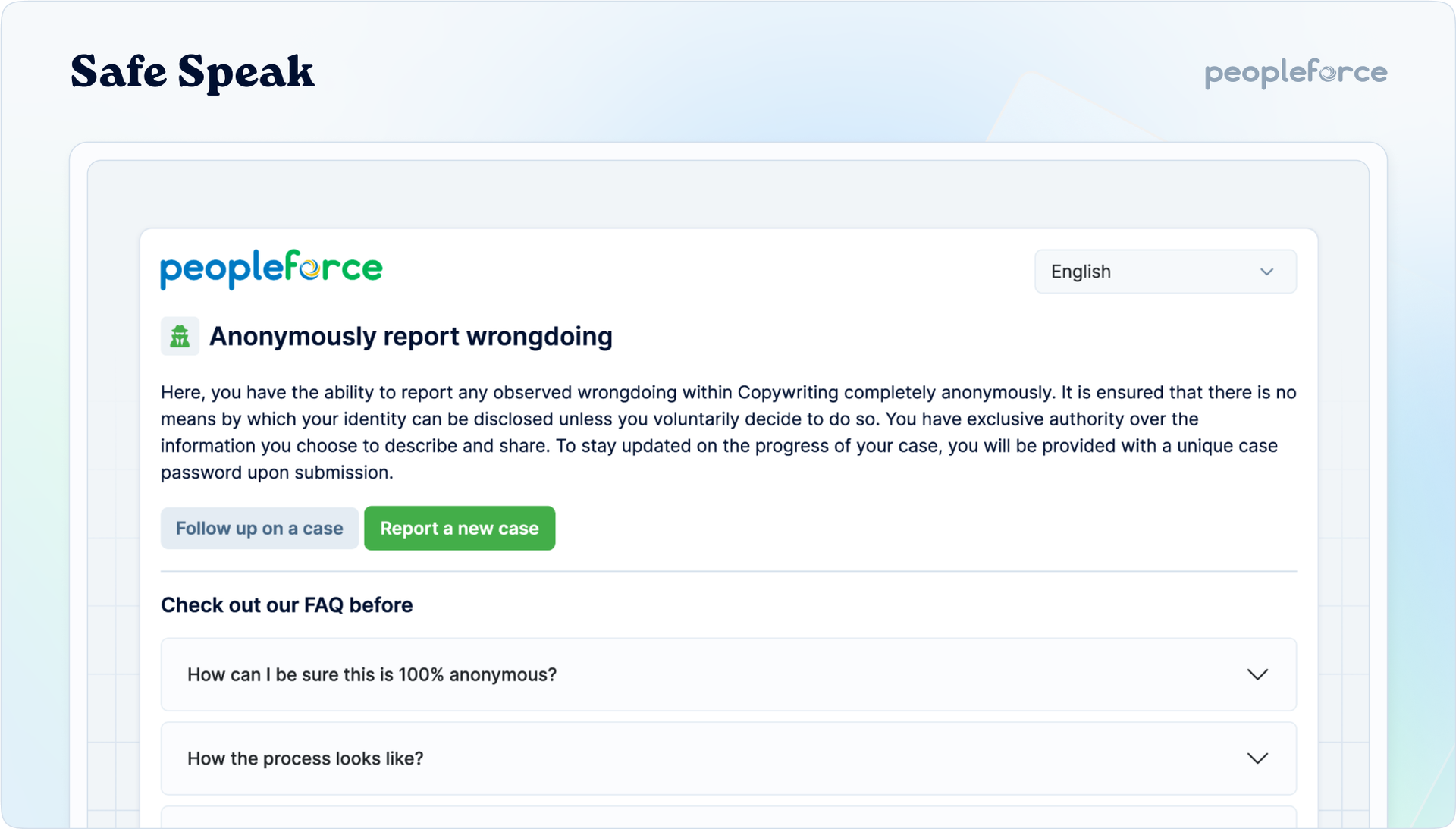
Implementing employee retention strategies
To address employee retention, companies need to create an employee retention strategy using their HR platforms. Let’s explore the essential steps organizations can take to enhance retention:
Identify the factors
Understanding why employees leave and aren't happy is crucial for companies. It helps them fix problems and keep more staff. With HR software, you can see how pay, benefits, and workplace culture affect retention.
Conducting regular surveys is key to gathering data on reasons influencing employee retention. With PeopleForce’s customizable surveys and analysis tools, companies can easily identify these reasons. Our real-time insights will help organizations understand what to improve.
Monitor
Companies must consistently use HR analytics tools to monitor retention metrics. This ensures proactive intervention to prevent turnover and address emerging issues quickly.
With PeopleForce’s analytics tools, companies can monitor turnover rates and engagement scores in real time. By checking and analyzing the data, they can quickly spot trends and make changes to improve employee retention.
Feedback loops
Feedback loops promote open communication and collaboration within companies. This empowers employees to voice their opinions and contribute to improving the organization.
For feedback loops to be effective, companies need transparent communication channels for employees. This could mean using surveys, suggestion boxes, and regular check-ins. Analyzing this feedback data is key to spotting trends and areas for improvement.
PeopleForce offers a range of feedback tools, including surveys, communication features, and the Safe Speak feature for anonymous reporting. These tools can help organizations foster open and transparent feedback loops.
Predict and prevent
Predictive analysis is key for organizations to spot retention issues before they get bigger. By finding employees who might leave soon, companies can take steps to keep them and reduce turnover.
With PeopleForce’s advanced analytics, organizations can foresee retention challenges and act early. By using historical data, they can identify at-risk employees and apply retention strategies.
Adaptive strategies
Strategies need to evolve with employee needs, ensuring satisfaction in a dynamic workplace. With insights from PeopleForce, organizations can customize retention strategies to fit their workforce.
Analyzing employee data helps identify what keeps employees engaged and areas for improvement. This could mean providing flexible schedules, career growth chances, or competitive compensation.
Summary
Did you know that one in three European workers is considering quitting their job in the next six months? That’s why companies must have an employee retention strategy in place.
Leveraging HR platforms like PeopleForce is essential in addressing retention challenges. Our suite of tools will help you gather insights, identify retention drivers, and tailor strategies to meet employee needs. Take proactive steps to improve employee retention by scheduling a demo with our experts.
Get started with PeopleForce today
Automate your HR routine to create a high performance culture in your company. PeopleForce is your best HRM alternative to stay business driven but people focused.
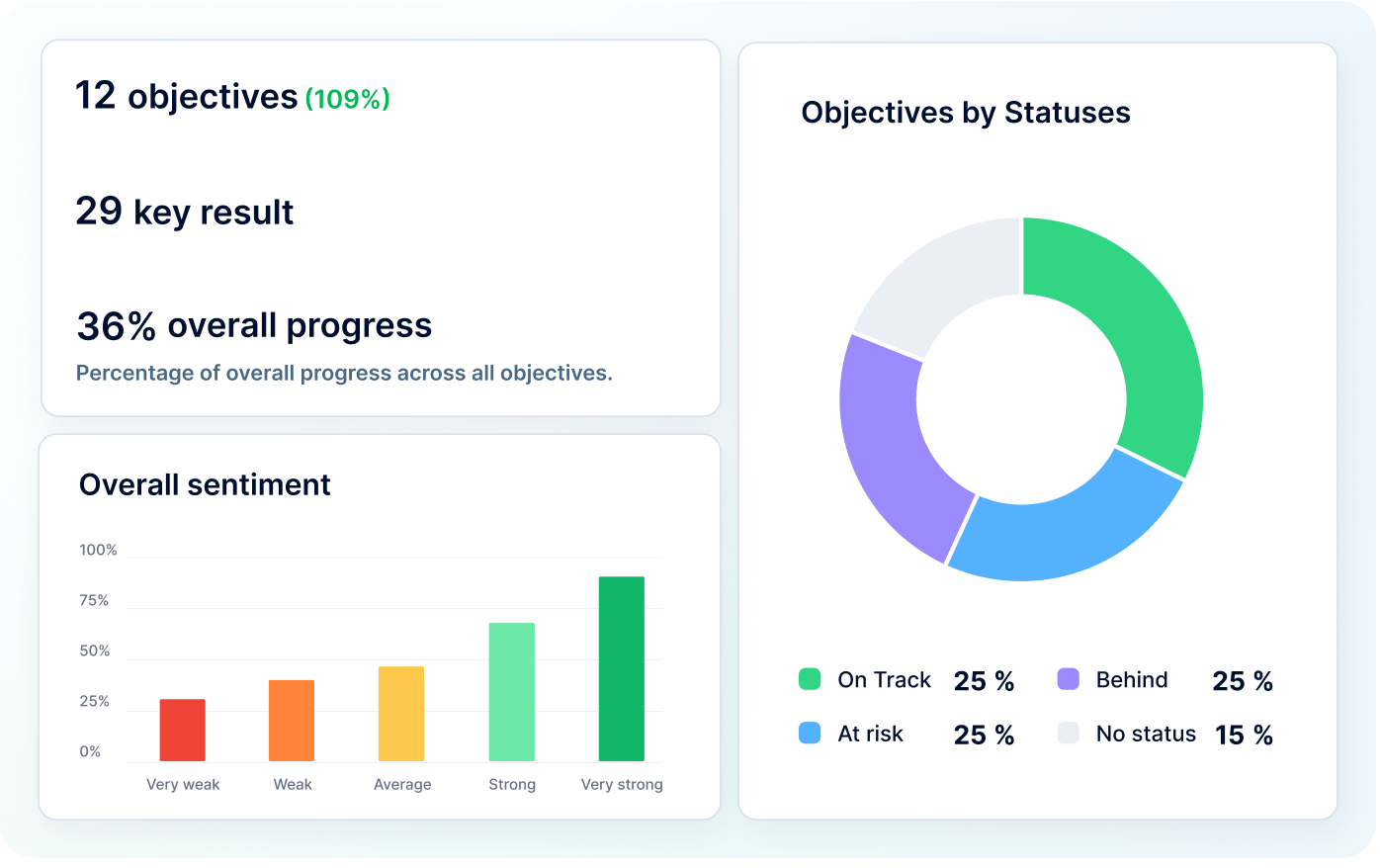
Recent articles
Empowering HR management for business through modern HR software
Employee retention is one of the top five priorities for human resource managers. Struggling to keep your talent, let alone empower employees to perform their best? If so, hi, you’re in the right place.
10 HR workflows that you should automate
Let's consider why automated workflows are necessary in 2023 and where the demand for avoiding human error in task execution comes from.
How to be an outstanding HR leader
Being a leader in HR means taking on a great deal of responsibility, are you cut out for the job? Here are 10 key traits you need to lead by example.

